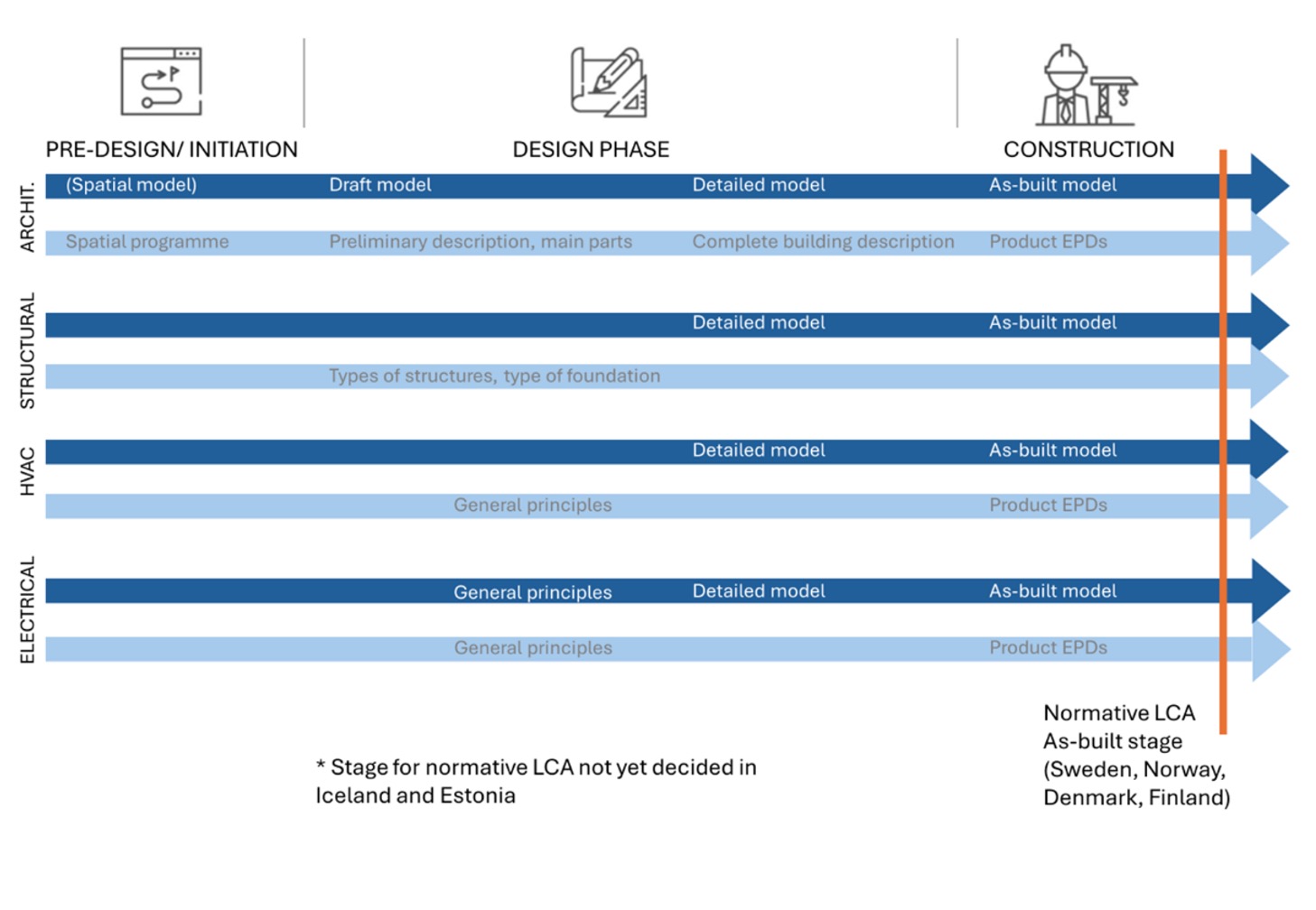2. LCA requirements and data availability in different project phases
All Nordic countries have either effective or planned legislation concerning mandatory carbon footprint calculations for certain building types. Limit values are also implemented or planned to be implemented in all countries. Voluntary carbon footprint calculations are made for various reasons, such as requirements from environmental certification schemes like LEED, BREEAM or DGNB or corporate or municipal strategies and roadmaps for sustainability. Depending on the purpose, LCA calculations can be performed at different stages in the design and construction process. The procedure for calculation remains the same throughout different stages, but the available BIM models and the included data differ.
In this document, the LCA required by legislation is referred to as normative LCA. It is useful to note that although legislation specifies a point at which the normative calculation must be done, this will likely not be the first time the calculation is made. Especially where limit values are in place, a preliminary calculation must be done early in the project to ensure compliance with the legislated limit when the time comes. This has been taken into account in the instructions of this document. In this way, LCA calculations resemble cost estimates: to stay within budget, regular check-ins are needed to ensure the project stays on target.
There are some national differences as to when the normative LCA is calculated (Figure 4). In Finland, Sweden, Norway, and Denmark, the carbon footprint calculation is based on as-built information and is submitted before the building inspection clears the building for use. In Estonia, the draft legislation requires normative LCA calculations to be reported along with the building permit. However, the stage for Estonian normative LCA is pending.

Figure 4. Stages of design and construction vs. normative LCA calculation in various Nordic countries
This difference in timing means that the data available from designers to be used in the normative LCA differs. The earlier the calculation is required in the construction process, the sparser and more inaccurate the information available is hence, more assumptions are required from the LCA specialist. At the building permit phase, only the architectural BIM model is typically available, with other disciplines either providing some data in other formats (structural engineering) or providing little or no data (HVAC engineering, electrical engineering). At the building permit stage, specific building products are mostly not yet defined; thus, product and material data are mainly based on generic data from national databases. Information regarding interior finishings and materials is typically also not available. Once the building is completed, the situation is different. All design disciplines have completed their BIM models, all materials are specified in some document (though not necessarily in BIM format), and all used products are known. However, not all chosen products have environmental product declarations (EPDs) available, which results in using generic data from national databases. The documentation conventions on installed products might still vary.
This BIM4LCA project has produced requirements for BIM-related information for normative LCA. The requirements include information that should be available during the building permit and as-built phases. The source of information in each phase has been identified as part of the work.